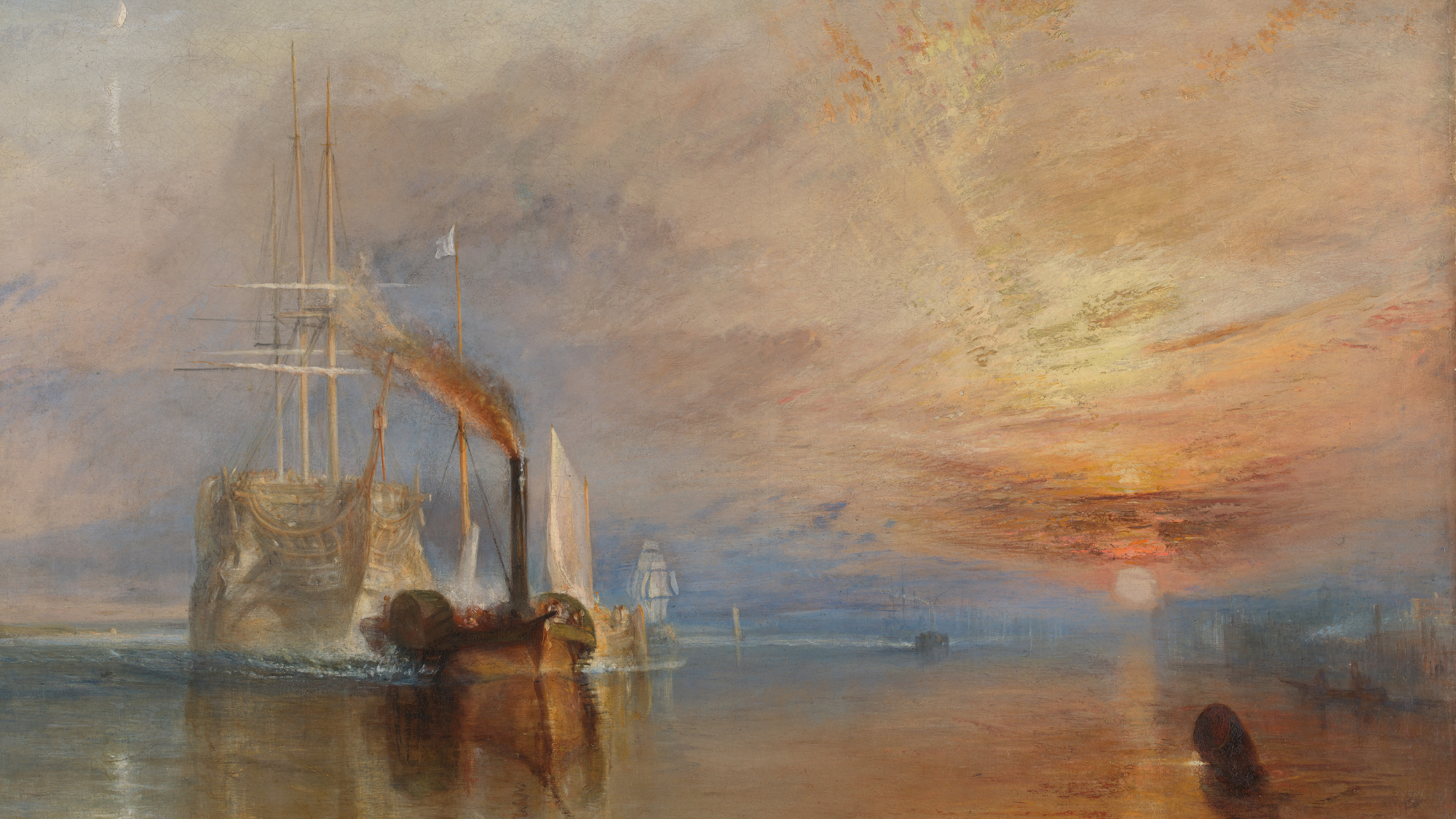Turner: Art, Industry & Nostalgia – an 'ambitious and moving' show
Turner's 'masterpiece' takes on new meaning in Newcastle

J.M.W. Turner's 1839 painting "The Fighting Temeraire" is regularly cited as "one of the nation's greatest treasures", said Barbara Hodgson in The Chronicle. The work depicts the H.M.S. Temeraire's "final journey" in 1838, as the once-mighty warship is towed down the Thames towards the yard where it will be broken up for scrap. The painting is often seen as a romantic elegy for the age of sail: set against a blazing sunset, the ghostly veteran of the Battle of Trafalgar is being guided to its end by a small, Tyneside-built steam paddle tug – a harbinger of the industrial transformation to come.
So it is fitting that, this summer, the painting has been transported from London to Newcastle, where it forms the centrepiece of an exhibition about Turner's links to the Northeast and the ways in which the region's shipbuilding industry has been depicted over the years. Consisting of more than 25 works by Turner himself, a host of maritime scenes by his contemporaries and works by modern artists, it offers an opportunity to see a "masterpiece" in a completely different context.
"The Fighting Temeraire" was Turner's favourite painting, said Laura Gascoigne in The Spectator. He kept it until his death, in 1851, and in a letter in 1845, he swore that he'd never "lend my Darling again". Still, I suspect that he would have approved of this loan, part of the National Gallery's bicentenary programme of loans to regional museums. By the time Turner painted his "bittersweet" requiem, with its black tug as "funereal as Charon's ferry", coal from Newcastle was powering the world. And, in fact, the artist relished "the atmospheric effects of industrial pollution"; to him, a "man- made cloud of smoke and steam" was as useful, for the purposes of atmosphere, as a storm cloud. Consider his "The Thames above Waterloo Bridge" (c.1830- 1835), with its "factory chimneys belching smoke into the sky at sunset over what looks like a river of fire". And according to Ruskin, Turner loved steamers. "A trail of steam is a useful figure in a seascape because it tells you about the wind", or the lack of it.
The Week
Escape your echo chamber. Get the facts behind the news, plus analysis from multiple perspectives.

Sign up for The Week's Free Newsletters
From our morning news briefing to a weekly Good News Newsletter, get the best of The Week delivered directly to your inbox.
From our morning news briefing to a weekly Good News Newsletter, get the best of The Week delivered directly to your inbox.
The "newfangled" steam tugs that towed the Temeraire to the scrapyard "were a Tyneside speciality", said Jonathan Jones in The Guardian. In fact, one "fascinating" item in this "ambitious and moving" show is a model of a Victorian tug built in the area. Now, these vessels too are part of a "rusting past", along with Tyneside's shipyards. We see the last days of that industry in a series of "powerful" monochrome photographs taken by Chris Killip in the 1970s. These images, of the shipyards and their surrounding terraced streets, do not jar with the 19th century ones; in fact, with their "sublime" disparities of scale, and sense of mourning, they take you right back to Turner, and his tear-jerking painting "about what it is to be outmoded in an ever-changing industrial world".
Laing Art Gallery, Newcastle. Until 7 September
A free daily email with the biggest news stories of the day – and the best features from TheWeek.com
-
 7 bars with comforting cocktails and great hospitality
7 bars with comforting cocktails and great hospitalitythe week recommends Winter is a fine time for going out and drinking up
-
 7 recipes that meet you wherever you are during winter
7 recipes that meet you wherever you are during winterthe week recommends Low-key January and decadent holiday eating are all accounted for
-
 Nine best TV shows of the year
Nine best TV shows of the yearThe Week Recommends From Adolescence to Amandaland
-
 Nine best TV shows of the year
Nine best TV shows of the yearThe Week Recommends From Adolescence to Amandaland
-
 7 hot cocktails to warm you across all of winter
7 hot cocktails to warm you across all of winterthe week recommends Toddies, yes. But also booze-free atole and spiked hot chocolate.
-
 Winter holidays in the snow and sun
Winter holidays in the snow and sunThe Week Recommends Escape the dark, cold days with the perfect getaway
-
 8 new cookbooks begging to be put to good winter use
8 new cookbooks begging to be put to good winter usethe week recommends Booze-free drinks, the magic versatility of breadcrumbs and Japanese one-pot cooking
-
 Let these comedians help you laugh your way through winter
Let these comedians help you laugh your way through winterThe Week Recommends Get some laughs from Nate Bargatze, Josh Johnson and more
-
 The 8 best drama movies of 2025
The 8 best drama movies of 2025the week recommends Nuclear war, dictatorship and the summer of 2020 highlight the most important and memorable films of 2025
-
 The best homes of the year
The best homes of the yearFeature Featuring a former helicopter engine repair workshop in Washington, D.C. and high-rise living in San Francisco
-
 Critics’ choice: The year’s top 10 movies
Critics’ choice: The year’s top 10 moviesFeature ‘One Battle After Another’ and ‘It Was Just an Accident’ stand out